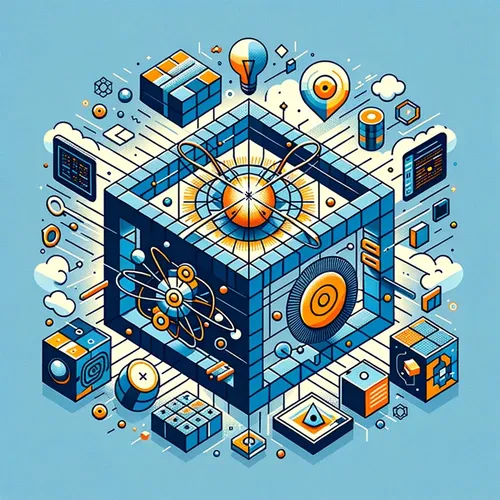Diamond Quantum Hybrid: Oak Ridge Fuses Brilliance and Brawn
- Author
- Quiet. Please
- Published
- Sun 07 Sep 2025
- Episode Link
- https://www.spreaker.com/episode/diamond-quantum-hybrid-oak-ridge-fuses-brilliance-and-brawn--67663812
This is your Quantum Computing 101 podcast.
Today’s episode begins not with a whisper, but with the clean, crystalline ring of diamond—yes, literally—because as of this week, Oak Ridge National Laboratory and Quantum Brilliance have unleashed a new era: diamond-based quantum-classical hybrid computing. I’m Leo, your Learning Enhanced Operator, and you’re listening to Quantum Computing 101.
If you’ve walked Oak Ridge’s Advanced Computing halls, you know the familiar chill of supercooled quantum devices—the hiss of liquid helium, the hum of cryogenics. But step into their new hybrid testbed, and the world feels different. Here, squeezed into a device the size of a graphics card, Quantum Brilliance’s diamond quantum processing unit—QPU—commands your attention at room temperature. This isn’t just slick engineering: it’s the first operational cluster of parallel quantum computers deployed alongside classical CPUs and GPUs within a functioning high-performance computing environment. Imagine diamonds, repurposed from gemstones to quantum engines, facilitating the convergence of two computation worlds that were once galaxies apart.
Why is this so riveting? Let’s get precise. Quantum computers, like those at ORNL, excel at problems where exponential complexity leaves even the mightiest supercomputers gasping—think protein folding or machine learning landscapes riddled with local minima. But today’s quantum machines are noisy and limited in qubit counts. That’s where the classical giants—HPC clusters and GPUs—remain supreme, churning through brute-force simulations, crunching data with the reliability quantum hardware has yet to master. Combine them, and you orchestrate workflows where tasks leap seamlessly between quantum and classical, each executing what they do best. Oak Ridge’s Quantum Brilliance systems co-schedule jobs, leveraging quantum parallelism for optimization or chemistry calculations, before handing off to the classical stack for massive-scale data operations. This, according to Travis Humble—director of the DOE’s Quantum Science Center—is the fundamental strategy for the next generation of leadership-class computing.
To dramatize: it’s like a symphony where the quantum instruments improvise radical new melodies—superpositions, entanglement—while the classical orchestra keeps the beat, providing structure and maximum volume. Only this orchestra is about to play to the tune of planetary weather simulations, cryptographic lock-picking, or artificial intelligence beyond current reach.
Parallel to the Oak Ridge advance, IonQ just announced a breakthrough in synthetic diamond films—created with Element Six—that make it possible to mass-produce high-quality quantum chips with standard semiconductor tools. These films form the backbone for quantum memory and photonic interconnects, hinting at how hybrid solutions will scale globally and reshape cloud computing, cybersecurity, and materials science.
What excites me is not just the hardware or the dazzling science—it’s the metaphor playing out across society. Just as our economies now blend in-person and virtual, just as cities mesh green space with skyscrapers, computation itself is hybridizing. The boundary between quantum and classical fades, replaced by synergy and creativity.
Thank you for joining me on Quantum Computing 101. If you have quantum queries or topics you want explored, email me anytime at [email protected]. Subscribe and tune in next time, and don’t forget—this has been a Quiet Please Production. For more, check out quiet please dot AI.
For more http://www.quietplease.ai
Get the best deals https://amzn.to/3ODvOta
